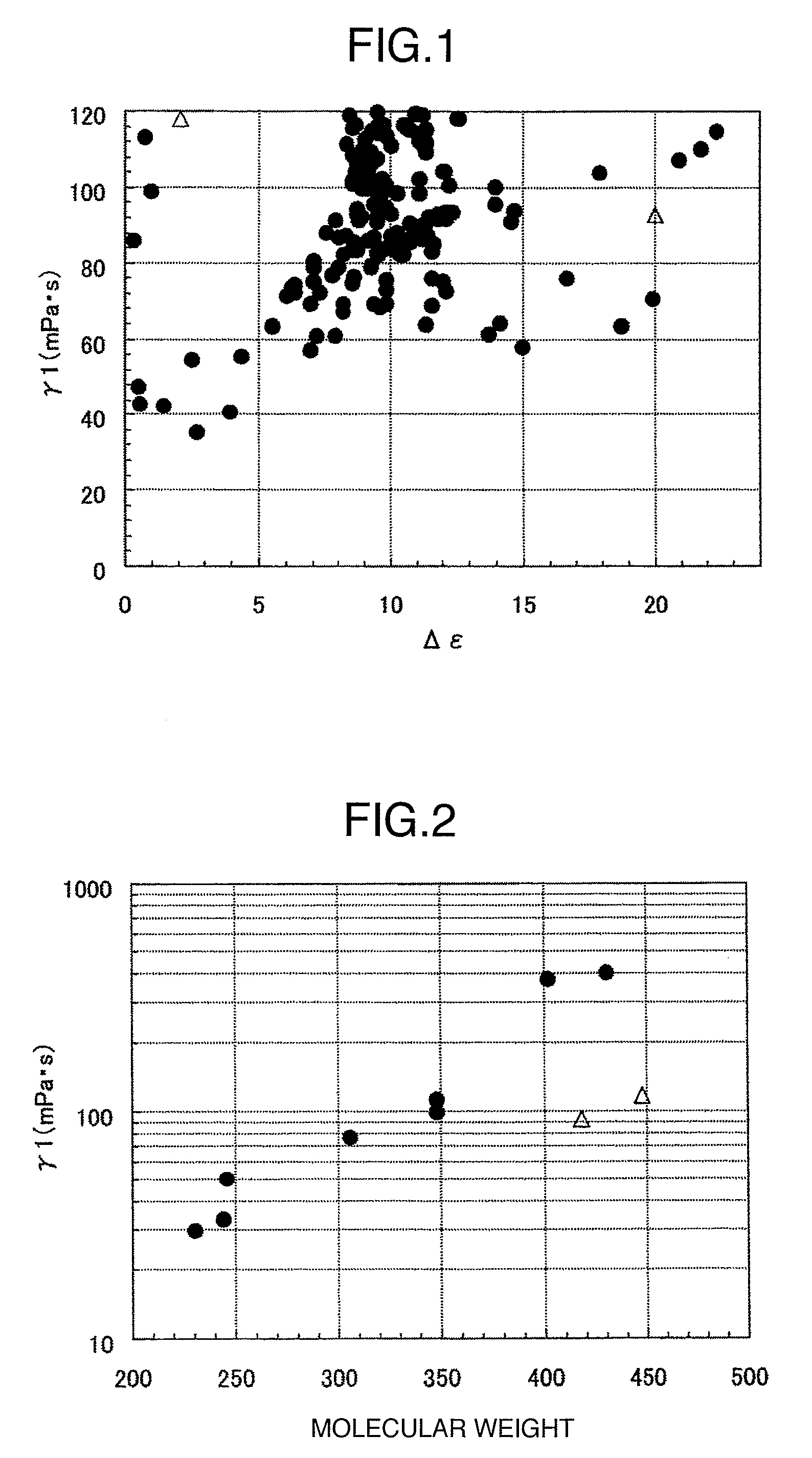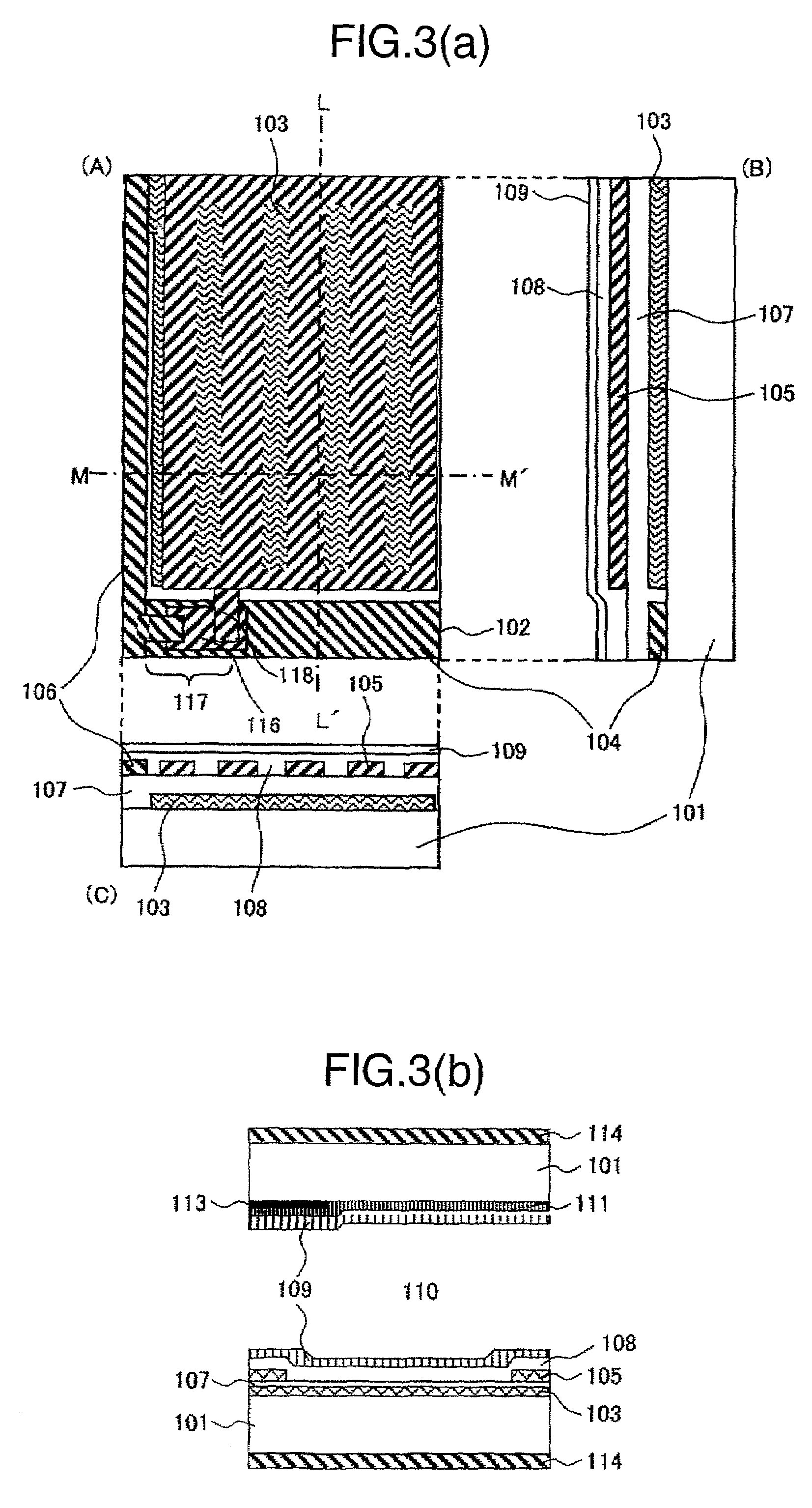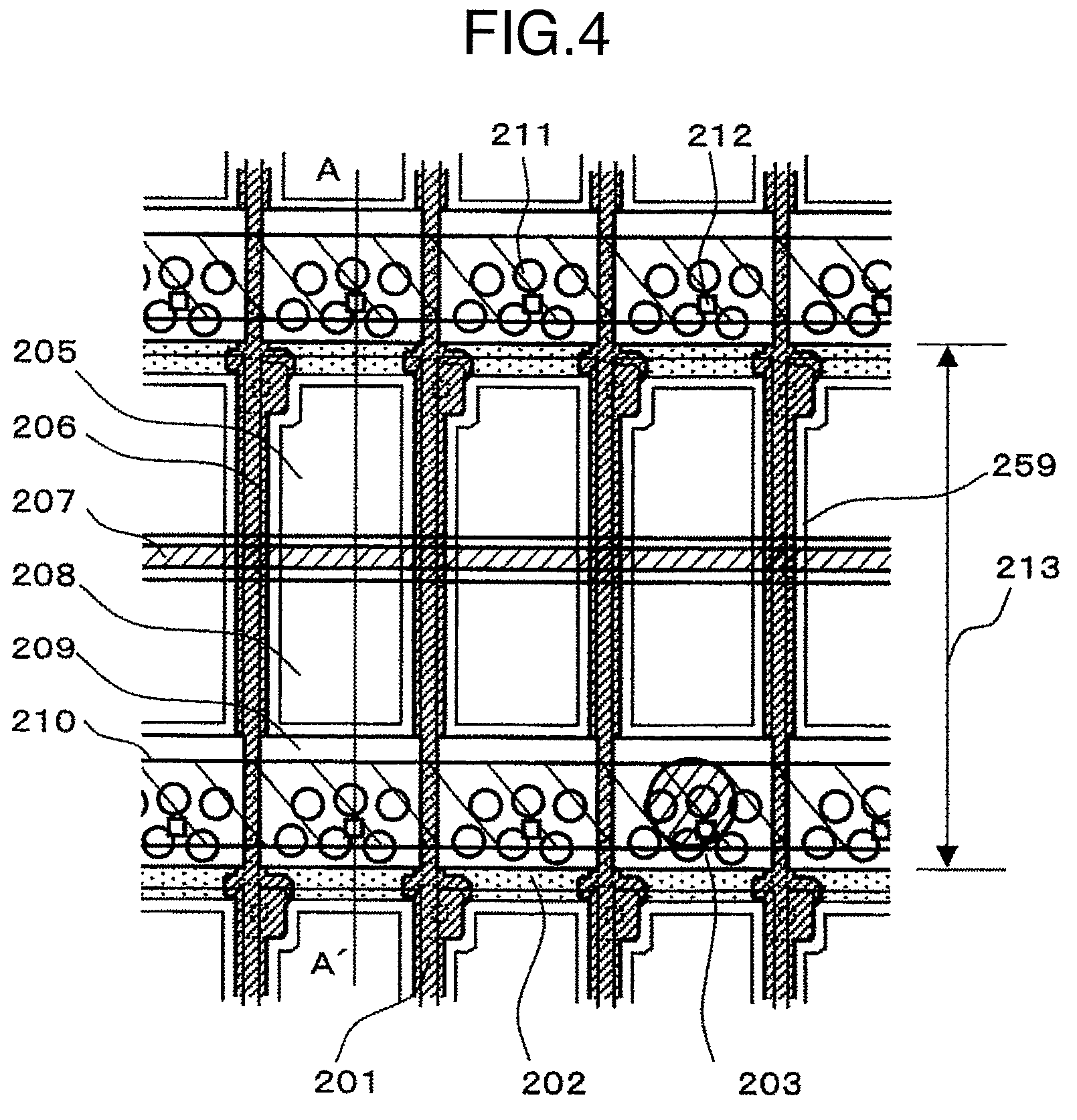Liquid crystal display device
a liquid crystal display and liquid crystal technology, applied in the direction of liquid crystal compositions, instruments, chemistry apparatus and processes, etc., can solve the problems of limited time required for the change of the orientation direction of the liquid crystal molecules, deterioration of the moving picture quality, and considered problems, and achieve good moving picture quality and difference in response time
- Summary
- Abstract
- Description
- Claims
- Application Information
AI Technical Summary
Benefits of technology
Problems solved by technology
Method used
Image
Examples
example 1
[0062]A first working example is explained below in detail with reference to FIG. 3(a) and FIG. 3(b).
[0063]In the production of a liquid crystal display device as the first working example of the present invention, a 0.7-mm thick glass substrate having a polished surface was used as each of a glass substrate 101 that constitutes an active-matrix substrate and another glass substrate 101 that constitutes an opposite substrate (a color filter substrate). Thin-film transistors 117 formed on the glass substrate 101 were composed of a pixel electrode wiring 118, a signal electrode 106, a scanning electrode 104 and a semiconductor film 116. A common electrode 103 and the pixel electrode wiring 118 were formed by patterning ITO, and all of the scanning electrode 104, a common electrode wiring 102 and the signal electrode 106 were formed by patterning a chromium film. An insulating film 107 and a protective film 108 were made of silicon nitride and the thickness of each of them was adjusted...
example 2
[0076]In the same manner as in the case of the liquid crystal display device described in Example 1, an active-matrix substrate and an opposite substrate having a color filter formed thereon were produced and then assembled. Then, compounds represented by the formulas 2 and 3 were added as typical examples of the liquid crystal compound specified in the fifth aspect of the invention to the same liquid crystal composition as used in Example 1, each in an amount of about 10% by weight, and the liquid crystal composition thus prepared was injected into the assembly obtained above, by vacuum enclosing. The liquid crystal display panel thus obtained was held between two polarizing plates 114. The polarizing plates 114 were located so that the axis of transmission of polarized light of one of the polarizing plates might be substantially parallel to the above-mentioned direction of liquid crystal molecular orientation and that the axis of transmission of polarized light of the other polari...
example 3
[0079]The structure of a liquid crystal display device of a working example according to the seventh to thirteenth aspects of the invention is explained below with reference to FIG. 4, FIG. 5 and FIG. 6. Although ECB display method was chosen in Example 3 unlike in Example 1 in which IPS method was adopted, other display methods such as IPS method, VA method and TN method may be chosen.
[0080]FIG. 4 is a plan view of the liquid crystal display device of the present example, which includes three pixels and their peripheral regions in a display region where pixels are located in the form of a matrix.
[0081]FIG. 5 is a sectional view taken along the line A-A′ of FIG. 4.
[0082]The plan view as FIG. 4 shows the location of the following: a backlight (not shown), a second substrate 215, a liquid crystal layer 221 and a first substrate 214 which are located in that order in the direction from the background to the foreground.
[0083]The first substrate 214 has the following components formed th...
PUM
| Property | Measurement | Unit |
|---|---|---|
| viscosity | aaaaa | aaaaa |
| thickness | aaaaa | aaaaa |
| distance | aaaaa | aaaaa |
Abstract
Description
Claims
Application Information
 Login to View More
Login to View More - R&D
- Intellectual Property
- Life Sciences
- Materials
- Tech Scout
- Unparalleled Data Quality
- Higher Quality Content
- 60% Fewer Hallucinations
Browse by: Latest US Patents, China's latest patents, Technical Efficacy Thesaurus, Application Domain, Technology Topic, Popular Technical Reports.
© 2025 PatSnap. All rights reserved.Legal|Privacy policy|Modern Slavery Act Transparency Statement|Sitemap|About US| Contact US: help@patsnap.com



